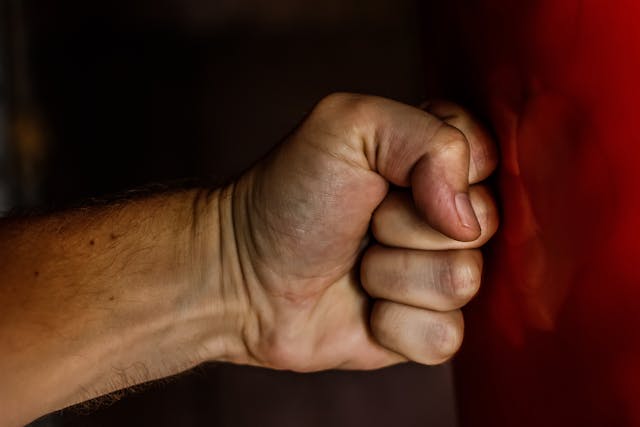
In today’s digital age, we are constantly surrounded by media, from television and movies to video games and social media.
While media can be a source of entertainment and information, there is growing concern about the effects of media violence.
How does exposure to violent content influence our behavior and society?
This blog post aims to explore these questions, providing a comprehensive look at media violence, its impact, and what we can do to mitigate its effects.
What is Media Violence?
Media violence refers to the depiction of violent actions in different types of media like TV shows, movies, video games, and online content.
It includes scenes showing physical aggression such as fights, shootings, and explosions, as well as psychological violence like bullying and threats.
Media violence is widespread and often exaggerated to grab attention and keep audiences interested.

Types of Media Violence
Media violence appears in various forms across different types of media:
Television and movies
Television shows and movies often showcase violence in different ways.
From intense fight scenes and crime dramas to realistic portrayals of war, these visuals aim to captivate audiences.
Sometimes, they dramatize violence to make stories more compelling or attract more viewers.
Video games
Many popular video games involve players engaging in virtual battles, shootings, and other aggressive actions.
These games range from realistic simulations to fantasy worlds where violence is a key part of gameplay and storytelling.
They provide entertainment and challenges, but also raise questions about their impact on players’ perceptions of violence.
News reports
Media outlets regularly cover real-life violent events such as wars, terrorist attacks, and crimes.
These reports inform the public about significant events but can also shape how people perceive violence in society.
They play a crucial role in keeping people informed but can also contribute to fear or desensitization towards violence.
Social media
Platforms like YouTube, TikTok, and Instagram are also platforms where violent content can be shared.
This includes user-generated videos showing fights or violent acts, as well as news stories about violent incidents.
The rapid spread of such content on social media can influence public discussions and perceptions about violence.

Theories Explaining the Effects of Media Violence
Several theories help explain how exposure to media violence affects individuals and society:
Social learning theory
According to Social Learning Theory by Albert Bandura, people, especially children, learn behaviors by watching others, including what they see in the media.
When individuals view violence in movies, TV shows, or video games, they may copy these behaviors in real life.
This theory shows how media can influence behavior through observation and imitation.
Desensitization theory
Desensitization Theory suggests that seeing a lot of violence in the media can make people less sensitive to it over time.
Regular exposure might reduce emotional reactions to violence and increase acceptance of aggressive behavior.
This theory highlights how constant exposure to violent content can change how people react to violence in their daily lives.
Cognitive script theory
Cognitive script theory proposes that people develop mental “scripts” for behavior based on what they see and experience, including in the media.
Media violence can create scripts in our minds that suggest aggressive responses to conflicts or stress.
These scripts can affect how individuals perceive and handle similar situations in real life, potentially encouraging aggressive behavior as a learned response.
Priming theory
Priming Theory suggests that exposure to media violence can prime individuals to respond aggressively in real-life situations.
When people repeatedly see violent acts in media, it can activate thoughts and feelings related to aggression, making them more likely to react aggressively in similar situations.
This theory shows how media exposure can influence immediate responses to situations based on recent experiences with violent content.

How Media Violence Influences Us
Aggressive behavior
Research, such as a meta-analysis by Anderson and Bushman in 2002, has consistently shown a link between exposure to media violence and increased aggression, especially in children and adolescents.
When people repeatedly see violent acts in movies, TV shows, or video games, it can influence how they behave in real life.
This can include being more likely to act aggressively or resolve conflicts in aggressive ways.
Fear and anxiety
Consuming violent media can heighten feelings of fear and anxiety in individuals.
Seeing graphic depictions of violence or intense scenes of danger can make people more fearful about their own safety or the safety of loved ones.
This heightened anxiety can affect how people perceive risks in their environment and may contribute to a sense of insecurity.
Desensitization
Over time, exposure to violent content can desensitize individuals.
This means they may become less emotionally responsive to violence, both in media and in real life.
Desensitization can lead to a diminished emotional reaction to violent acts, making individuals more accepting of violence as a normal part of everyday life.
It can also reduce empathy towards victims of violence, as individuals may become less sensitive to the suffering portrayed in the media.
Imitation
Especially among children, exposure to media violence can lead to imitation of aggressive behaviors seen on screen.
When young people observe characters using violence to solve problems or achieve goals in the media, they may mimic these behaviors in their own interactions or play.
This imitation can reinforce aggressive tendencies and shape how children perceive and respond to conflicts in their daily lives.

Impact of Media Violence on Society
Exposure to media violence can have significant impacts on society:
Increased crime rates
Research, such as that by Centerwall in 1989, suggests a link between violent media and higher crime rates.
It found that the introduction of violent TV programs in the mid-20th century correlated with an increase in violent crimes in subsequent years.
This correlation raises concerns about how media portrayals of violence might influence real-world behavior and societal trends.
Cultural norms
Media violence can shape cultural norms by making aggressive behavior appear more acceptable.
When violence is repeatedly shown as a solution to problems in movies, TV shows, or video games, it can affect how people perceive and respond to conflict in their daily lives.
This normalization of aggression in the media can influence societal attitudes towards violence and its consequences.
Public health concerns
The psychological effects of media violence are a significant public health issue.
Exposure to violent content has been linked to increased aggression, desensitization to violence, and heightened fear and anxiety.
These effects can contribute to various social and behavioral problems, impacting individuals’ well-being and community cohesion.

Who is Most Affected?
Children and adolescents
Young people are particularly vulnerable to the effects of media violence due to their developmental stage and impressionability.
Children and adolescents may have difficulty distinguishing between fantasy and reality, making them more likely to imitate behaviors they see in media.
This can influence their attitudes towards violence and shape their social interactions and problem-solving strategies.
Individuals with preexisting aggressive tendencies
People who already exhibit aggressive behavior may be more susceptible to the influence of violent media.
Exposure to violent content can reinforce and amplify existing aggressive tendencies, potentially leading to more frequent and intense acts of aggression in real life.
Frequent consumers of violent media
The more time individuals spend consuming violent media, the greater the potential impact on their attitudes and behaviors.
Regular exposure to violent content can desensitize individuals to violence, making them less sensitive to its consequences and more accepting of aggressive behavior as a societal norm.

What Can We Do?
Parental guidance
Parents play a crucial role in guiding their children’s media consumption.
By actively monitoring what their children watch, play, and read, parents can ensure they are exposed to age-appropriate content.
It’s important for parents to discuss with their children the distinction between what they see in media—often exaggerated or fictional—and real-life behavior.
These conversations help children develop critical thinking skills and understand how media can influence their attitudes and actions.
Media literacy education
Integrating media literacy education into school curricula equips young people with the tools to critically evaluate media content.
This education teaches students how to analyze messages portrayed in media, including the portrayal of violence, and encourages them to question stereotypes and biases.
By fostering a deeper understanding of how media works and its influence, students can make informed choices about what they consume and how they interpret media messages.
Industry regulations
Implementing stricter regulations on how violence is portrayed in media can mitigate its negative impact.
By setting guidelines for media producers and platforms, regulations can limit the depiction of gratuitous violence and ensure that content is responsibly presented.
This includes considering age ratings, warning labels, and restrictions on certain types of violent content to protect vulnerable audiences, especially children and adolescents.
Encouraging positive content
Promoting and creating media that emphasize positive behaviors and constructive conflict resolution provides healthier alternatives to violent content.
By supporting creators who produce content that promotes empathy, tolerance, and non-violent solutions to problems, we can shape a media landscape that contributes positively to societal values and norms.
This approach not only provides audiences with uplifting and inspiring content but also reinforces positive behaviors in individuals and communities.
Conclusion
The influence of media violence is a complex issue with far-reaching implications for individuals and society.
By understanding the theories behind its effects and recognizing who is most affected, we can take steps to mitigate its impact.
Through parental guidance, media literacy education, industry regulations, and the promotion of positive content, we can create a healthier media landscape for everyone.


